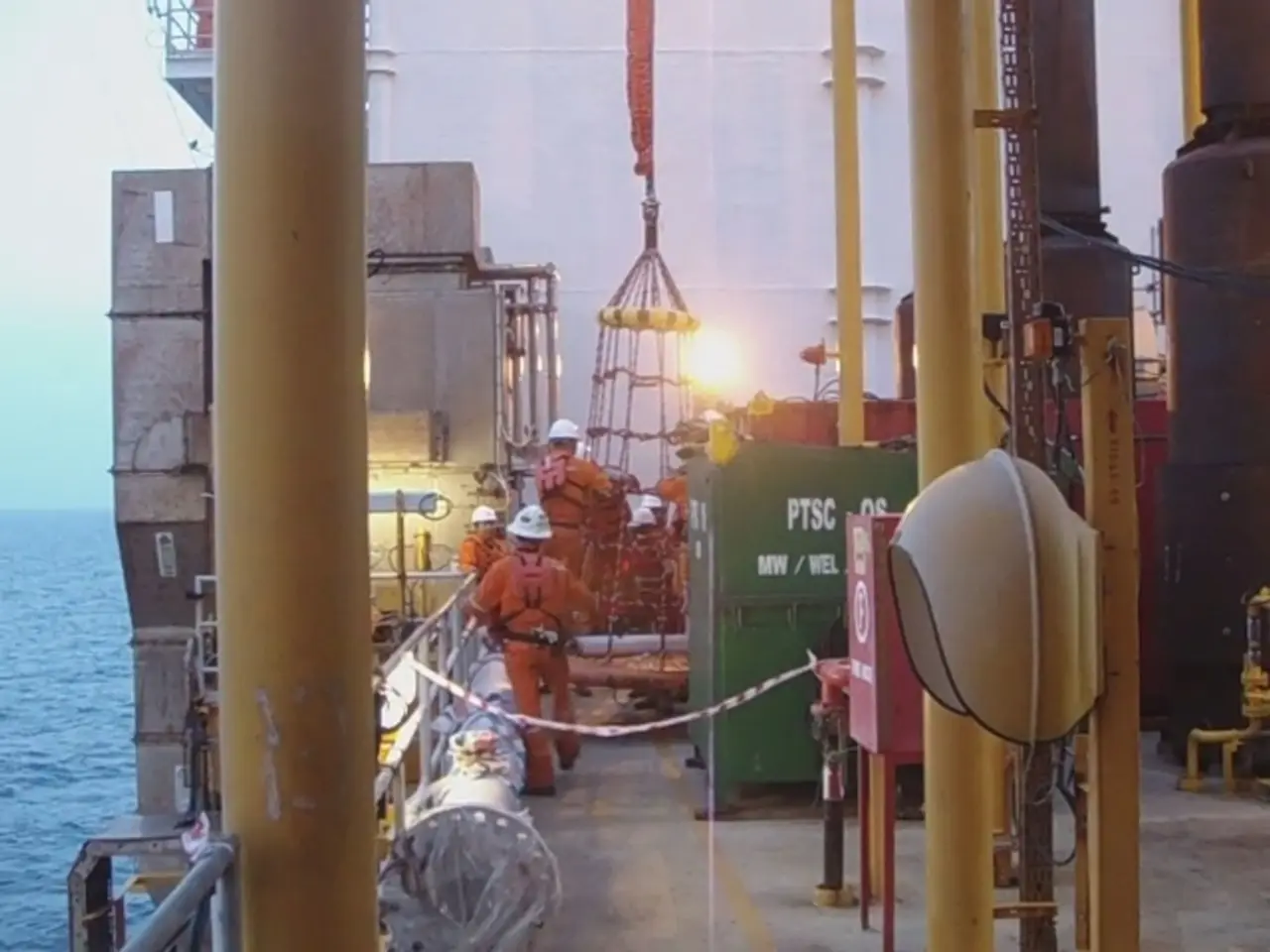Titan Submersible Disaster: An Analysis Revealing Avoidable Causes
In a shocking revelation, the U.S. Coast Guard's 335-page report on the June 2023 OceanGate Titan submersible implosion has found that the tragedy, which claimed the lives of five individuals, was preventable and primarily caused by OceanGate’s inadequate design, testing, certification, maintenance, and inspection processes[1][3][4][5].
The investigation uncovered several key findings, including:
- Inadequate engineering protocols: OceanGate failed to apply fundamental engineering principles essential for deep-sea submersibles, resulting in a structurally flawed carbon-fiber hull that ultimately failed under pressure[1][4][5].
- Lack of hull life and fatigue analysis: There was no proper evaluation of the durability or expected lifetime of the hull material, which weakened safety assurances[4].
- Over-reliance on real-time monitoring: The company depended heavily on a hull monitoring system, but the data was not rigorously analyzed or acted upon[3][4].
- Continued use despite damage: Titan’s hull and other components suffered damage in prior incidents, yet the sub was kept in operation without adequate inspection or repair[1][4][5].
- Toxic workplace culture: Safety concerns were often ignored or suppressed, discouraging employees from raising critical issues[2][4][5].
- Misrepresentation and regulatory evasion: CEO Stockton Rush misrepresented Titan’s safety, calling it “indestructible,” giving a false sense of security to customers and regulators, while strategically exploiting regulatory gaps to avoid oversight[1][2][5].
- Inadequate regulatory framework: There was a lack of comprehensive, effective regulations and enforcement mechanisms for novel manned submersibles, domestically and internationally[2][3][5].
The Coast Guard’s recommendations to prevent future incidents include:
- Strengthening regulatory oversight: Establish clear, comprehensive regulations and certification requirements for design, operation, and inspection of submersibles, including federal passenger vessel standards[2][3][5].
- Revoking Oceanographic Research Vessel (ORV) designations until vessels meet federal inspection standards[2].
- Mandating advance notification and operational plans: Submersible owners must submit dive and emergency response plans to the Coast Guard prior to operations[2].
- Improving inter-agency coordination and resources: Enhance collaboration among federal agencies and dedicate resources to oversee vessels of novel design effectively[3].
- Addressing workplace culture: Promote safety culture reforms within organizations operating submersibles[2][4].
These findings and recommendations could significantly impact future submersible operations by imposing stricter engineering and operational standards, ensuring robust oversight, improving safety culture within companies, and closing current regulatory gaps. This may lead to safer design, certification, and operational practices for all manned submersibles, and possibly restrict or better monitor novel designs until proven safe[1][2][3][4][5].
The report also accused OceanGate of maintaining inadequate safety protocols, ultimately attributing the implosion to non-compliance with established engineering safety and testing standards[1]. The Marine Board proposed 14 safety recommendations aimed at the US Coast Guard and the submersible industry as a whole[3].
Rob McCallum, an expert in deep-sea operations, highlighted the unpredictability of carbon fiber materials, stating, "Carbon fiber has its place in deep-sea submersibles, but it's important to understand its limitations and be vigilant in monitoring its performance"[4].
Jason Neubauer, chair of the Coast Guard Marine Board, emphasized the importance of heightened oversight and regulatory clarity for operators engaging in innovative explorations outside traditional frameworks[2]. Investigators pointed a finger at Stockton Rush, the founder of OceanGate and pilot during the Titan's critical voyage, stating that his negligence played a role in the incident[1].
The report criticized OceanGate's workplace culture, describing it as "toxic," and accused the company of employing intimidation tactics to circumvent regulatory scrutiny[2]. If he had survived, CEO Stockton Rush could potentially face criminal charges for contributing to the loss of life[2].
The Titan submersible imploded approximately 90 minutes post-launch due to a catastrophic failure of its carbon-fiber structure[1]. The Coast Guard's investigation concluded that the disaster was "preventable" due to significant failings in safety practices associated with the Titan's operation[1]. The report noted the inherent unreliability of carbon fiber at depths, where materials can undergo delamination, leading to weaknesses[4].
The OceanGate Titan submersible imploded on June 18, 2023, during a descent to the Titanic wreck site, resulting in the deaths of all five occupants[1]. OceanGate has expressed its condolences to the families affected by the incident and indicated its commitment to fully cooperate with the Coast Guard's inquiries[5].
This tragic event serves as a stark reminder of the importance of rigorous safety protocols, regulatory compliance, and a strong safety culture in the submersible industry. The findings and recommendations from the U.S. Coast Guard's report could pave the way for a safer and more responsible future for deep-sea exploration.
The investigation revealed that OceanGate's inadequate engineering protocols, lack of hull life and fatigue analysis, and over-reliance on real-time monitoring significantly contributed to the structural failure of the Titan submersible. Additionally, the medical-conditions of the occupants during the deep-sea descent might have been adversely affected by the health-and-wellness implications of the submersible's factors, which could have potentially played a role in the disaster.




